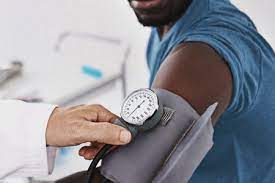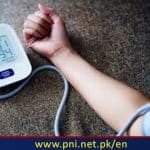Islamabad, (ONLINE): Could smartphones be the blood pressure-reading tools of the future? New research suggests an innovative idea: to use selfie videos as an easier, more convenient way to monitor blood pressure.
Monitoring youráblood pressureáis an important part of maintaining cardiovascular health.
Currently, the typical means of doing this is through cuff-based devices that detect the pressure of blood as the heart contracts (systolic blood pressure) and relaxes (diastolic blood pressure).
But a research team from Hangzhou Normal University, in China, and the University of Toronto, in Canada, believes that there may be a quicker, easier, and more convenient way of monitoring blood pressure.
This is “transdermal optical imaging,” which predicts a person’s blood pressure measurements based on a short, selfie-style video of their face. More specifically, this method uses smartphones’ optical sensors to track blood flow patterns under the skin.
It does this by assessing the way in which ambient light penetrates and reflects off the outer layer of the skin.
“High blood pressure is a major contributor to cardiovascular disease Ś a leading cause of death and disability. To manage and prevent it, regular monitoring of one’s blood pressure is essential,” notes the current study’s lead author, Prof. Kang Lee.
“Cuff-based blood pressure measuring devices, while highly accurate, are inconvenient and uncomfortable. Users tend not to follow American Heart Association guidelines and device manufacturers’ suggestion[s] to take multiple measurements each time,” he goes on to note.
This is why Prof. Lee and colleagues thought it was important to come up with a more convenient method of assessment for blood pressure. The researchers report their experiments with transdermal optical imaging in a study paper featured in the journaláCirculation: Cardiovascular Imaging.
To test this innovative blood pressure monitoring method, the researchers recruited 1,328 participants in Canada and China.
The experiments took place in a quiet study room, where the researchers directed each participant to sit in front of a smartphone set to record using the front camera. The participants had 5 minutes to acclimatize before the recording began, and it lasted for 2 minutes.
At the same time that participants were recording selfie-style videos, the researchers used traditional methods to monitor their blood pressure, in order to compare these measurements with the predictions based on transdermal optical imaging.
Using these data, the researchers also taught the optical imaging technology to make more accurate predictions of blood pressure andpulseáreadings based on facial blood flow patterns.
On average, the imaging technology using selfie videos was able to predict systolic blood pressure with approximately 95% accuracy and diastolic blood pressure and pulse pressure with an accuracy of almost 96%.
Prof. Lee notes that this level of accuracy is in line with current international standards for traditional blood pressure monitoring devices.
However, it will most likely take time before this technology becomes available to the general public. Particularly because, as the researchers admit, the current study faced a number of limitations. These may mean that the accurate predictions are restricted to certain groups and environmental circumstances.
The team explains that the videos in the experiment took place in an environment with fixed lighting and temperature. This could mean that selfie videos taken spontaneously at home or abroad may not give the same level of accuracy regarding blood pressure predictions.
Moreover, Prof. Lee and colleagues note that the participant cohort did not include individuals with very dark or very light skin tones.á
Also, the participants all had blood pressure within normal ranges, so the team is unsure whether the current technology could accurately pick up on instances of hypertension (high blood pressure).
Finally, the researchers aim to apply the technology to much shorter videos, lasting 30 seconds rather than 2 minutes, as individuals may find it difficult to stand still and record themselves for longer periods of time.
“If future studies confirm our results and show [that] this method can be used to measure blood pressures that are clinically high or low, we will have the option of a contactless and noninvasive method to monitor blood pressures conveniently Ś perhaps anytime and anywhere Ś for health management purposes.”
In anáeditorialáthat accompanies the study paper, Prof. Ramakrishna Mukkamala, who specializes in biomedical signal processing at Michigan State University, in East Lansing, also concludes that “Perhaps [blood pressure monitoring] with a click of a camera is not that far-fetched after all.”
Follow the PNI Facebook page for the latest news and updates.








